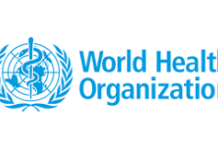Researchers at Chalmers University of Technology are advancing the use of graphene, a one-atom-thick layer of graphite, in the fight against antibiotic resistance and infections in healthcare. Their earlier research demonstrated that vertically aligned graphene flakes could prevent bacteria from attaching to surfaces, slicing them apart with razor-sharp edges. “We’re developing a graphene-based, ultra-thin antibacterial material that can be applied to surfaces like biomedical devices, implants, and surgical tools to block bacterial colonization,” explains Ivan Mijakovic, a professor of systems biology at Chalmers. Unlike chemical alternatives such as antibiotics, graphene avoids the risk of contributing to antibiotic resistance since it stops bacteria from physically attaching to surfaces.
As reported by sciencedaily.com, a key challenge has been controlling the alignment of graphene flakes to apply this material to medical devices. The researchers had only been able to align the flakes in one direction, determined by the flow of the manufacturing process. However, recent breakthroughs allow for the alignment of graphene in multiple directions with high uniformity, enabling the creation of antibacterial surfaces capable of killing 99.99% of bacteria. This advance opens the door to manufacturing more versatile bacteria-resistant medical devices, according to Roland Kádár, professor of rheology at Chalmers.
By using a circular arrangement of magnets, the researchers were able to uniformly orient graphene flakes on surfaces of any shape. This method, based on a “Halbach array,” enhances the magnetic field inside the array while weakening it on the outside, allowing for precise alignment. Kádár highlights that this marks the first successful use of the Halbach array for graphene orientation in a polymer nanocomposite, with promising implications for reducing healthcare-associated infections and curbing antibiotic resistance.
The new alignment technique has potential applications beyond healthcare, such as in batteries, sensors, and water-resistant packaging. “This approach unlocks new possibilities for material design, mimicking complex natural structures,” Kádár notes.
























